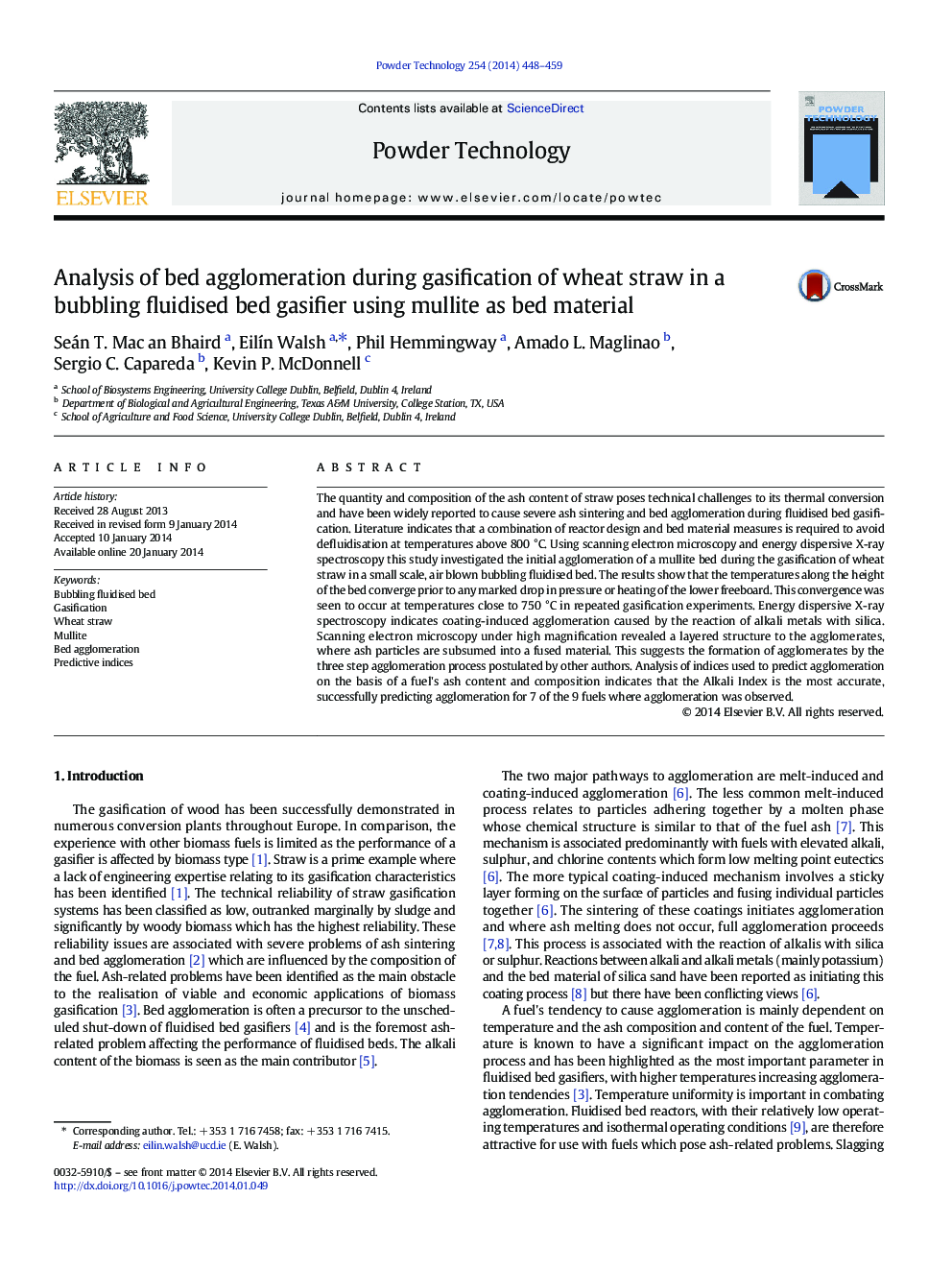| کد مقاله | کد نشریه | سال انتشار | مقاله انگلیسی | نسخه تمام متن |
|---|---|---|---|---|
| 236273 | 465666 | 2014 | 12 صفحه PDF | دانلود رایگان |
• The low technical reliability of straw gasification systems is associated with ash.
• SEM and EDS analyses were conducted to determine agglomeration tendency of straw.
• K, Ca, Mg, Al and Si were present, consistent with coating-induced agglomeration.
• Predictive indices were evaluated to determine agglomeration forecasting accuracy.
• The Alkali Index was the most accurate, predicting agglomeration for 7 of 9 fuels.
The quantity and composition of the ash content of straw poses technical challenges to its thermal conversion and have been widely reported to cause severe ash sintering and bed agglomeration during fluidised bed gasification. Literature indicates that a combination of reactor design and bed material measures is required to avoid defluidisation at temperatures above 800 °C. Using scanning electron microscopy and energy dispersive X-ray spectroscopy this study investigated the initial agglomeration of a mullite bed during the gasification of wheat straw in a small scale, air blown bubbling fluidised bed. The results show that the temperatures along the height of the bed converge prior to any marked drop in pressure or heating of the lower freeboard. This convergence was seen to occur at temperatures close to 750 °C in repeated gasification experiments. Energy dispersive X-ray spectroscopy indicates coating-induced agglomeration caused by the reaction of alkali metals with silica. Scanning electron microscopy under high magnification revealed a layered structure to the agglomerates, where ash particles are subsumed into a fused material. This suggests the formation of agglomerates by the three step agglomeration process postulated by other authors. Analysis of indices used to predict agglomeration on the basis of a fuel's ash content and composition indicates that the Alkali Index is the most accurate, successfully predicting agglomeration for 7 of the 9 fuels where agglomeration was observed.
Energy dispersive X-ray spectrometry analysis of an agglomerate formed where bed material was bonded together by a black matrix; the EDS presented is of the surface of the particle.Figure optionsDownload as PowerPoint slide
Journal: Powder Technology - Volume 254, March 2014, Pages 448–459
